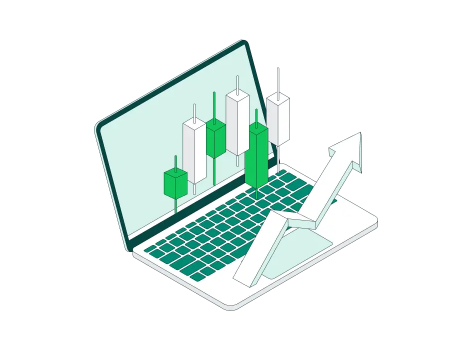Pip, Lot, and Leverage: Key Terms Every CFD Trader Must Know
Entering the realm of CFD (Contract for Difference) trading can be daunting, especially when faced with the often-unfamiliar terms of "pips," "lots," and "leverage." These are not just words—they are some of the key components that will determine your success or failure when trading. Numerous beginners embark on a career in CFD trading with little or no knowledge of these components. Certainly there are many that suffer huge losses they could have easily avoided.
Consider the following example: A new trader believes they risk $100 in a trade, but because they did not fully understand the implications of leverage and lot sizes, they actually risk $1,000.
is a Pip? The Foundation of Profit and Loss
A "pip" means "Percentage in Point" or "Price Interest Point"; it refers to the smallest standardized unit of price movement in forex and CFD trading. In simple terms, you can think of pips as the ruler we use to measure market movements. For most currency pairs a pip is the fourth decimal place (0.0001), and for Japanese Yen pairs, it is the second decimal place (0.01).
Understanding pip values is important, because they measure price fluctuations, which directly link to your profits and losses. If EUR/USD moved from 1.1020 to 1.1025 that would represent a 5-pip movement. But what does that translate to in money? That depends on your lot size; and that brings us to our next important topic.
a Lot? Controlling Your Trade Size and Risk
In the case of CFD trading, a "lot" is part of a standardized unit that expresses how big your trade is. Think of it like your trade has volume settings, like a sound system. If you increase your music's volume, you make it loud. While blasting music may not increase your profits, it may disturb your neighbor. Increasing your lot sizes is no different. The more you make your lot, the more profits and more losses you can incur.
The beauty of different lot sizes is that you can control your risk exposure with precision. If a beginner holds $1,000 and is trading the same lot size as an experienced trader with $100,000, they are not thinking clearly. The scalability of a lot system can provide a structure to doubling down.
What is Leverage? The Double-Edged Sword
Leverage is likely the most complicated topic in CFD trading. Leveraging is a financial tool that enables you to control a much larger position than your actual trading capital would normally allow. Let’s say you have 1:100 leverage. That means your $1,000 position would give you the ability to control a $100,000 position.
Sounds incredible, right? Well, there’s a caveat: for every dollar of profit that leverage can bring, it can also amplify your losses.
How Pip, Lot, and Leverage Work Together: The Complete Framework
Now we come to the important part; realising how the three parameters work together to affect each other and ultimately your trading. The three parameters are not independent of each other; they are a connected set of variables, and if you change anything in the system, then you will change the overall risk and reward parameter.
Keep in mind: Leverage determines how much capital you control, lot size determines how much capital you expose yourself to, and pips determine how high or low the market had moved that now has a monetary gain or loss attached to it.
Conclusion: Your Path to CFD Trading Mastery
Knowing what pips, lots, and leverage mean is only one part of mastering them; the other part is developing the discipline to use them correctly, effectively, and responsibly. Each of these concepts is a core part of the foundation of every successful CFD trading model.
The road to becoming a consistently profitable CFD trader is one that takes time, education, and disciplined implementations of risk management principles. Don't rush the process; the markets will always be there, your capital won't be there for long if you don't take care of it.
For more info:-


Comments
Post a Comment